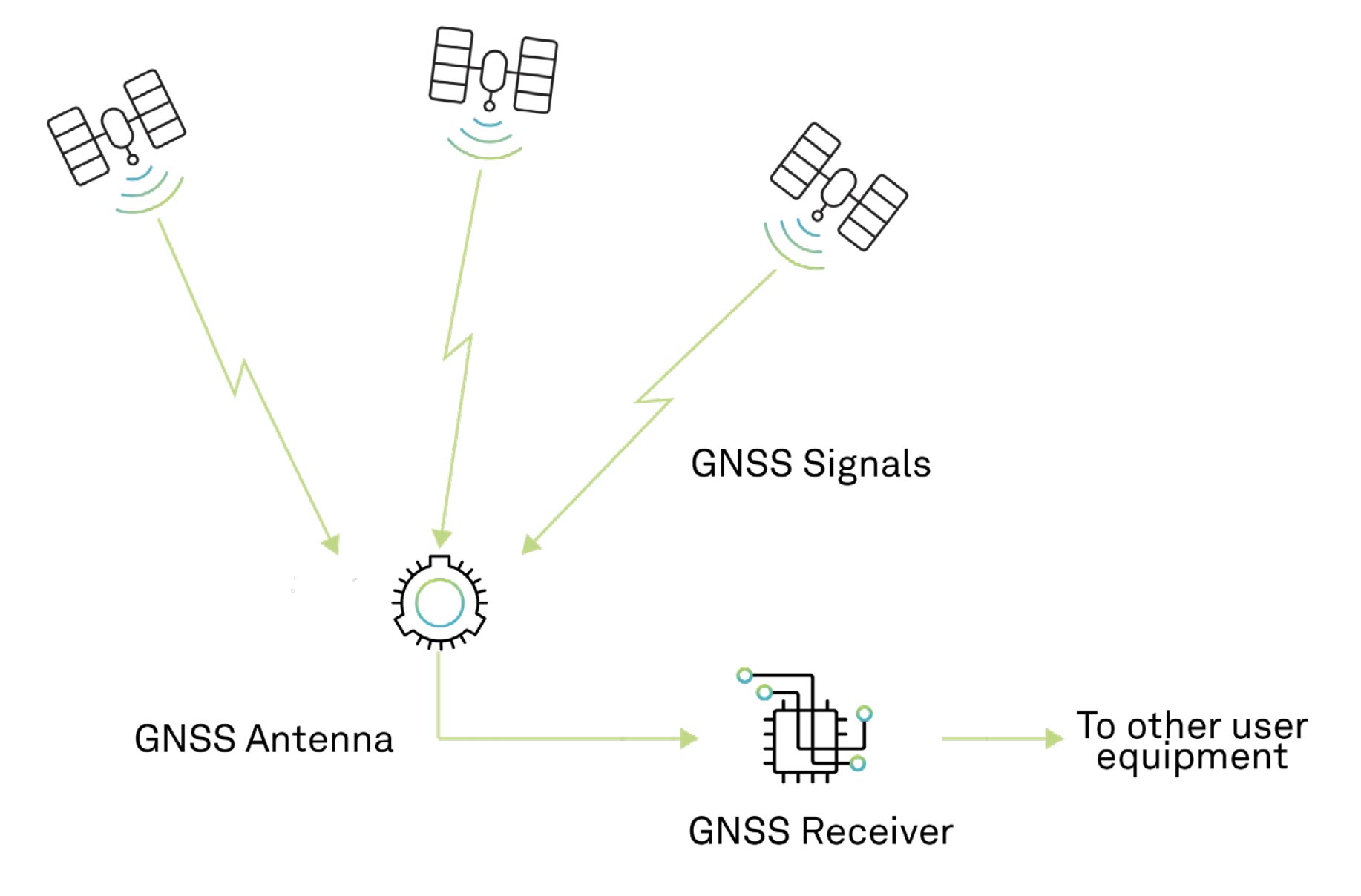AGRICULTURE
The primary components of the GNSS user segment are antennas and receivers, as shown in Figure 7. Depending on the application, antennas and receivers may be physically separate or they may be integrated into one assembly.

GNSS antennas receive the radio signals that are transmitted by the GNSS satellites and send these signals to the receivers. GNSS antennas are available in a range of shapes, sizes and performances. The antenna is selected based on the application. While a large antenna may be appropriate for a base station, a lightweight, low-profile aerodynamic antenna may be more suitable for aircraft or Unmanned Aerial Vehicles (UAV) installations. Figure 8 presents a sampling of GNSS antennas.
GNSS receivers process the satellite signals recovered by the antenna to calculate position and time. Receivers may be designed to use signals from one or more GNSS constellations. As illustrated in Figure 9, receivers are available in many form factors and configurations to meet the requirements of the varied applications of GNSS.
We will talk more about GNSS equipment in Chapter 9.